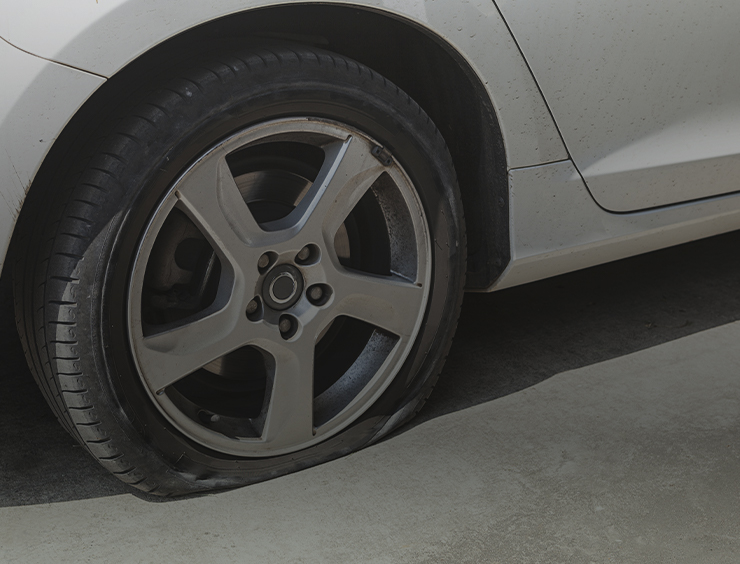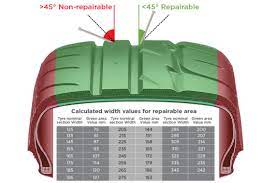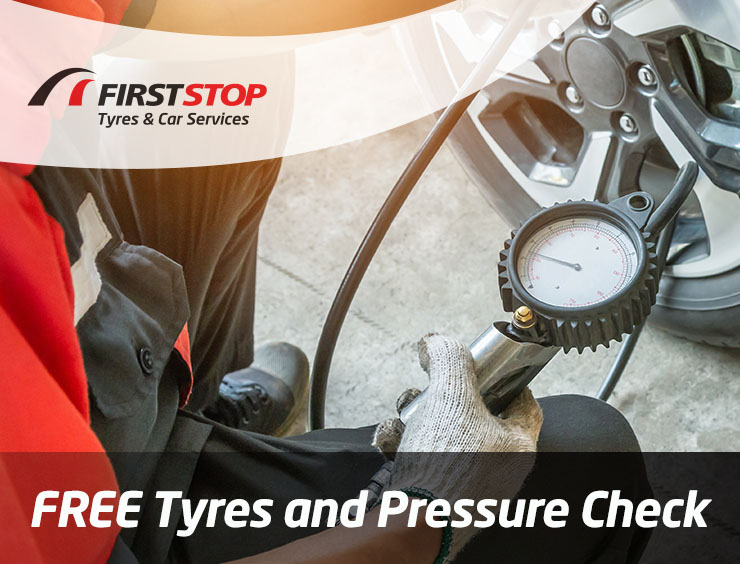There’s never a good time for a puncture. In fact, it’s estimated that more than half of all punctures happen at the most inconvenient time and place. Whether you were on your way to an important meeting or a family event, change course to your nearest First Stop Centre when you get a puncture. Our experts will inspect and repair the tyre if possible—or fit a new tyre if not.
Even though they’re very common, punctures can be stressful things to deal with, and it’s not always easy to remember the best course of action when they happen. Let’s take a closer look at your options when it comes to puncture repair, including a look at the various different types of tyre damage and fully understanding the decision to repair or replace.

Find your nearest tyre shop
Got a flat tyre? We’re here to help. In fact, tyres are what we do best. Use our store locator to find your nearest First Stop and let’s get started.
What should I do if my tyre gets a puncture?
If you get a puncture while driving, it's important to handle the situation carefully. Here's a step-by-step guide on what to do:
- Pull over safely: As soon as you suspect a puncture, gently reduce your speed and look for a safe place to pull over. Avoid sudden movements and use your indicators to inform other drivers.
- Assess the situation: Once stopped, turn on your hazard lights, apply the parking brake, and if necessary, place warning triangles behind your vehicle to alert oncoming traffic.
- Install the spare tyre: Retrieve your spare tyre, jack, and wheel wrench. Before lifting the car with the jack, loosen the lug nuts on the punctured tyre. Then, lift the car, remove the lug nuts completely, and replace the damaged tyre with the spare.
- Head to your nearest First Stop: Drive cautiously to your nearest First Stop Centre. Remember, the spare tyre is a temporary solution, and you should avoid driving at high speeds or for long distances.
If your car has run-flat tyres like Bridgestone DriveGuard, you can continue driving for a limited distance—typically up to 50 miles—at a reduced speed (usually not exceeding 50 mph). This gives you the opportunity to reach a safe location or a service center without an immediate tyre change. It is important to remember that run-flat tyres can’t be repaired. Therefore, if your car runs on these tyres, our expert technicians will need to replace them with a new one.
When can a tyre puncture be repaired?
Unfortunately, not all punctures can be repaired. It’s not always a straightforward decision to make, so it’s important to have a specialist thoroughly inspect the tyre before proceeding.
If the puncture in the tyre is in the tread, it can probably be resolved with a minor repair as long as there is no internal damage to the tyre. However, if the puncture is in the shoulder of the tyre, or in the tyre wall, it is most likely that the puncture is irreparable. There are also other factors to consider, such as the age of the tyre—it’s not worth repairing a tyre that is already close to minimum tread depth.
If the right course of action is to replace a tyre instead of attempting a repair, your First Stop specialist will recommend the best type of new tyre to suit your vehicle, whether it’s a summer tyre, winter tyre, all-season tyre, or run-flat tyre from our extensive collection.

Types of tyre damage
Tyre damage is an unfortunate reality of driving and can result from a variety of possible causes. Road hazards like sharp objects are a common culprit, but the wear and tear of daily driving also takes its toll. Even elements like extreme temperatures or exposure to sunlight can slowly degrade tyre materials. No matter what caused it, the resulting damage to your tyres can vary in severity and impact:
- Punctures: Small holes caused by nails, screws, or other sharp debris.
- Cuts and gouges: These deeper damages can happen due to encounters with sharp edges on potholes or unexpected road debris.
- Sidewall bulges: A strong indicator of internal damage, often from an impact against a solid object like a curb.
- Age and wear: Over time, tyres lose tread depth and can also cracks that compromise their integrity.
- Slashes: Usually larger and more severe, often necessitating immediate tyre replacement.
- Slow puncture: Gradual air loss that can occur from a damaged valve stem or weakened tyre bead seal.
Each type of damage has specific implications for the performance and safety of your tyre. Punctures within the tread area are commonly repairable, but slashes or gouges often necessitate a full tyre replacement. Identifying the nature of tyre damage is essential because it determines whether the tyre needs to be repaired or replaced to ensure your vehicle remains safe to drive.
Puncture location
The location of a puncture can determine whether or not a repair is possible. Generally speaking, punctures located in the central tread area can be repaired if they are less than 6mm in diameter. This is because the central tread provides a sturdy, thick area that can hold a repair patch securely.
On the other hand, damage to the tyre's shoulder or sidewall usually means a repair is not possible. These areas flex and deform as you drive, which can cause a repair patch to fail. The sidewall is also critical to the tyre's structural strength; any damage here can significantly weaken the tyre, leading to a high risk of blowouts.
If the puncture is near the edge of the tread where it meets the sidewall, repair becomes risky and replacement is often the safer option. A professional assessment is always recommended to ensure safety, as improper handling of tyre repairs can lead to further damage and potential hazards on the road.


Tyre pressure
Did you know that maintaining the correct tyre pressure is a great way to reduce the risk of punctures? Under-inflated tyres are more prone to damage because they can cause the tyre to compress when it rolls, increasing stress and heat buildup within the tyre materials. This makes them softer and more susceptible to being penetrated by sharp objects.
Over-inflated tyres can be just as problematic because they are less flexible when you encounter debris or potholes, making them more likely to sustain damage from sharp impacts.
Properly inflated tyres have the resilience to withstand minor impacts and the structural integrity to avoid internal damage from common road conditions. Remember to regularly check your tyre pressure and adjust it according to your manufacturer's specifications. It’s one of the simplest and most effective ways to protect your tyres from punctures and other types of damage.
Run-flat tyres
Run-flat tyres are specially designed to maintain their shape and enable continued driving for a limited distance even after they have lost air pressure due to a puncture. This can be a significant advantage in terms of safety and convenience, as it gives you the ability to drive to a safe location or a repair shop without the immediate need for a roadside tyre change.
Run-flat tyres typically use reinforced sidewalls that support the vehicle’s weight even when the tyre is deflated. However, they are not invincible and do have some limitations. They can usually only be driven on for about 50 miles and at reduced speeds after sustaining a puncture. Unfortunately, run-flat tyres can’t be repaired once they have suffered a puncture. Even so, and despite their higher price point, the safety benefits and peace of mind they offer make run-flat tyres a popular choice for many drivers.
Don’t let a flat stop you in your tracks: Find out why so many satisfied drivers comes to First Stop for puncture repairs and tyre replacements. Simply contact your nearest First Stop whenever you need us and we’ll be ready to help.